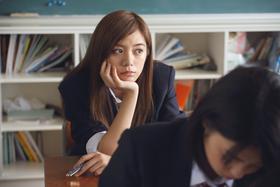The “skilled worker shortage” has become popular fodder for educators and business leaders alike. The perceived shortage has pushed for more partnerships between businesses and local community colleges and even more effective vocational programs at the high school level. However, some economists and other experts argue that the labor shortage is a myth, construed by educators and others who are interested in promoting their own interests by expanding the base of mid-level skills in the country. So is the skilled worker shortage a hard fact or mere myth? The answer may be much more complex than one might think.
Jobs Sitting Empty
One compelling argument in favor of the skilled worker shortage is the fact that many jobs at this level are sitting vacant today. Bloomberg Business Week reports that as many as 600,000 manufacturing jobs in the United States remain unfilled. Those numbers come from a recent report published by Manufacturing Institute.
According to the Business Review, New York alone could see a worker shortage of 350,000 by 2018, as the need for skilled employees in the technology sector continues to rise. The Society for Human Resource Management cites numbers from the McKinsey Global Institute that show the world could be short 40 million college-educated workers by 2020. Developed areas of North America and Europe alone could see a worker gap of up to 16-18 million workers by 2020.
While the numbers sound grand, individuals are urged to take a closer look at the data to determine precisely what these numbers represent. While there is no doubt industries may have more job openings than skilled applicants to fill them, investigation of the figures suggests more forces at play than a simple worker shortage.
What are Mid-Level Skills?
Before understanding the full scope of the skilled worker shortage, it is important to define precisely what a “skilled worker” is. Skilled workers are those who work in mid-level jobs, which are jobs that require education somewhere between a high school diploma and a two-year degree. Mid-level jobs are often not a good fit for students that have not performed well in high school since they require skill levels beyond what the student might be able to handle in postsecondary studies.
The Business Record reports that unfortunately, that message doesn’t always get to high school teachers and counselors trying to help students find their way after high school. Ron Pinegar, state training director for the Iowa Electrical Apprenticeship program told the Business Record he gets calls every year from high school teachers looking to place low-performing students in the electrical training program – even though the program includes high-level math courses. The misperception that trade occupations are limited to low-performing academic students could contribute to the smaller number of students heading to mid-level job training today.
The Demographics Problem
The concern over fewer young students entering training programs for mid-level jobs is compounded by the current demographics in these industries. The Business Record reports that more than half of the skilled workers in Iowa are over the age of 45, and more than 20 percent are over the age of 55. The national levels are slightly higher.
As many of these workers head to their retirement years, there is concern that there will not be new skilled applicants to take their places. During the recent Great Recession, when unemployment rates were high and companies were busy downsizing, those demographics did not present a major problem. However, as many of those industries are now ramping back up, the worker shortage is becoming a bigger issue once again.
Unchanging Wages, Unfilled Positions
A recent article at Forbes points out that although there is supposed to be a shortage of qualified applicants, the wages for these jobs have not increased. By the basic laws of supply and demand, if these jobs were in higher demand, the price for workers should naturally rise. Since wages are remaining mostly stagnant, the demand must not be that high.
In addition, business experts are noting that many of the positions counted as open by some businesses and industries are actually not intended to be filled in the near future. Although the company may have lost a worker in a specific position, the slower economy has not created an urgent need for the company to find an immediate replacement. This trend might also explain the fact that wages have not increased, despite the growing number of job openings.
The New Global Market
However, proponents of the worker shortage are quick to point out that wages are tied to more than simple supply and demand. As the market has gone global, it has tied the hands of companies in terms of what they can charge for goods and services in order to remain competitive. If a company cannot charge more for a product, they will not have additional income to provide higher salaries to their employees, no matter how much they might need to fill positions.
Whether there is a true worker shortage or a perceived crisis in advanced industries, there are no doubt fields like advanced manufacturing, construction and healthcare will continue to need skilled workers to fill mid-level positions. Community colleges and technical schools are poised to answer that call, with targeted training for open industries in their communities. As these schools continue to partner with area businesses, perhaps the worker shortage, real or contrived, will no longer be a problem in this country.
Questions? Contact us on Facebook. @communitycollegereview














